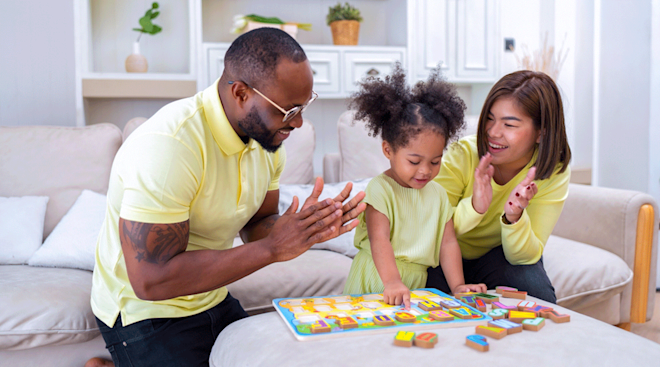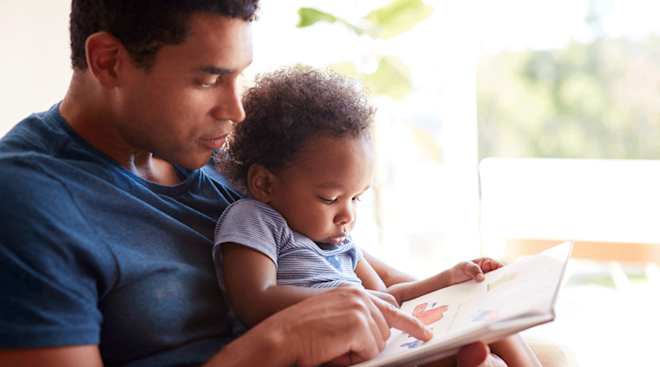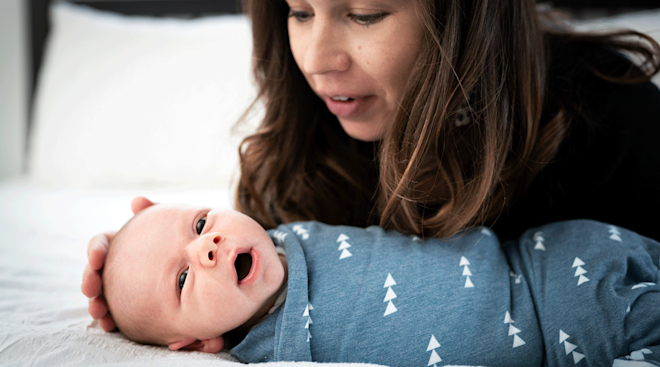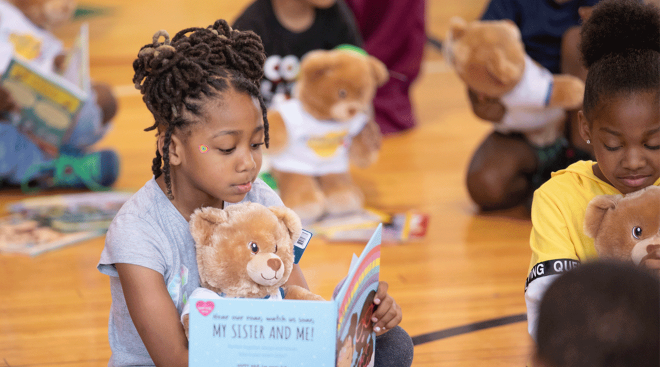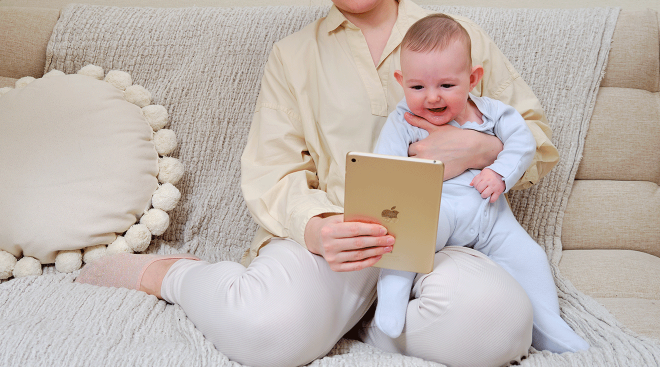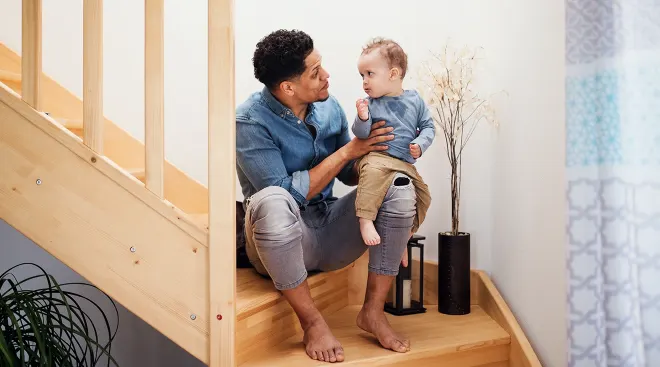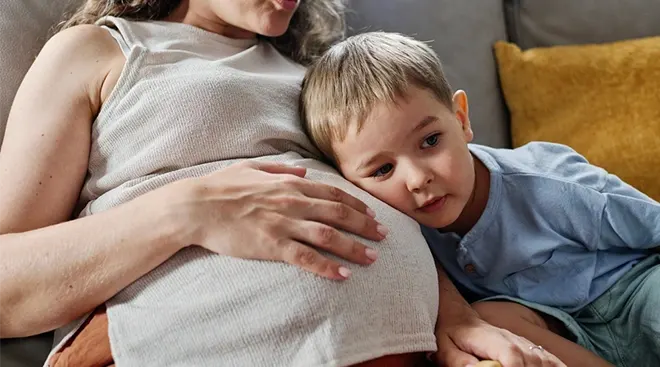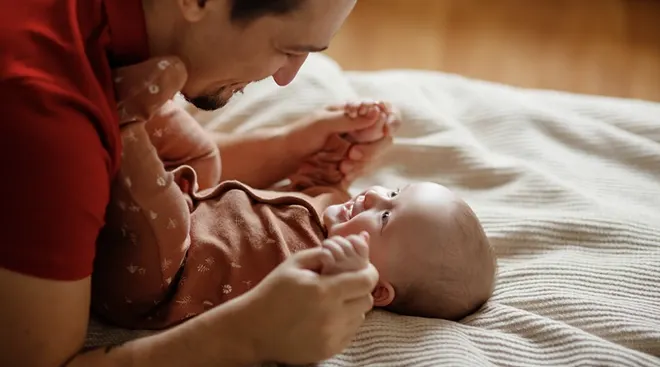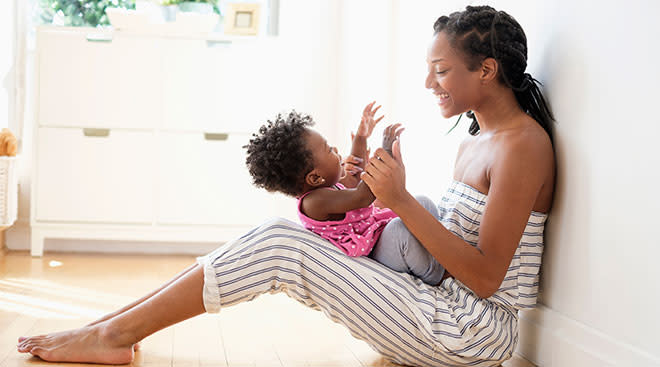5 Developmental Patterns This Expert Is Seeing in Pandemic Babies
March of 2020 seems like a distant memory, but every day we’re greeted by reminders that COVID-19 is here to stay. As parents, we continue to have to make important decisions about our families in an ever-evolving situation. Choices about childcare, playdates and health appointments feel weighty and are measured against our own personal risk tolerance.
But COVID’s far-reaching consequences don’t stop there: New research suggests that children who were born during the pandemic are experiencing greater delays in their fine and gross motor skills. What’s more, their social-emotional development has been impacted. In response to these very real shifts, the Centers for Disease Control and Prevention (CDC) and the American Academy of Pediatrics (AAP) have both adjusted their baby and toddler milestone guidelines.
As a pediatric speech-language pathologist, I’ve personally observed some interesting developmental, behavioral and verbal patterns that have emerged among pandemic babies and toddlers. If your little one is struggling to meet certain milestones and keep pace with where they’re supposed to be physically and socially, rest assured that this may be par for the pandemic course. The good news is that there are ways to work with your little one to help counter these so-called COVID consequences. Below, some behaviors you may have noticed—plus, tips to help foster your little one’s development.
Babies begin to develop social awareness around 3 months of age, when they learn to identify their caregivers’ voices. The concept of “stranger danger” follows a few months later. But in the last two years—as a result of social distancing and quarantining—babies and toddlers have had far fewer experiences with new and unfamiliar people, and they haven’t had the opportunity to problem-solve in this situation. This has resulted in many children becoming shy and withdrawn among new people; your kiddo may also have a harder time separating from you in new settings.
What you can do about it:
As it becomes a little safer to navigate the world, you can work to gradually expose infants, toddlers and young children to new environments in small doses. It may not be feasible to immediately enroll your children in a daycare center with 10 new children and walk away on the first day, but you can ease into this type of transition. Set up a private meeting for your child with a new teacher, and schedule playdates with new friends. Not ready for that leap? You can also join a parent-and-child class or playgroup where they’ll see other kids and slowly learn to separate from you and explore.
Babies learn to coo and babble by hearing and copying sounds in their environment, and watching the lip movements of the people around them. (For example, the “p,” ‘b” and “m” sounds are very visual.) While parents are maskless with their babies at home, mouth-covering masks have precluded many other learning opportunities. What’s more, the sounds that our little ones do hear are often muffled by masks.
What you can do about it:
It’s important to prioritize face-to-face time at home. Sit baby on your lap, facing you, while you sing songs and do finger play, and try making funny faces at each other in a mirror during bathtime. Dedicating this special time together each day will help ensure your little one is getting the feedback they need to move from incoherent jargon to first words.
In my 15-year career, never have I ever seen so many children have difficulty pronouncing multisyllabic words (think: “elephant,” “banana” or “ice-cream cone”). This is a progression of the previous problem, and it’s more common among toddlers 2 years old and up. A prolonged period spent learning from masked adults has resulted in many little learners dropping pieces of words.
Occasionally, kids who are unable to say words correctly will shut down or attempt to use pointing and gesturing to get their point across. It’s important to identify what types of behavior your child is using to help them work toward better, clearer communication.
What you can do about it:
If your toddler is mispronouncing a word and you don’t understand what they’re saying, look for contextual clues. For example, “ana” could be “banana” if there’s a banana on the table. But it may actually be “piano” if there’s also one nearby.
Use clapping or stomping to help break the word apart into smaller pieces that are easier to say. The key here is to help your child break down the word into “new” words, so start from the end of the word and make your way forward. So, “elephant” would be “phant”, “el” and, finally, “el-eh-phant”. For another multi-sensory approach to learning longer words, make little balls of Play-Doh that correspond to the syllables in a word and smash them as you say each syllable.
I’ll admit this is a problem I’m having as an adult too! All this time spent away from other people has made it much more difficult to socialize. When children finally do learn language, they want to be able to use it to play with their friends. Between the ages of 2 and 3, children go from parallel play (playing next to a friend doing the same thing) to associative play (sharing toys and playing together with a peer). Because of their lack of experience being around other people, many kids are getting stuck in the parallel play stage. This is something I’m observing in children up to 5 years of age.
What you can do about it:
The best way to help children learn new play skills is by showing them how it’s done. Schedule a playdate with another child. Take out a simple toy with just one or two pieces and show the children how they can pass toys off to you, and then get them back. Next, facilitate having the children pass toys back and forth between each other. When working in this way, you can also narrate what’s happening so that your child has the language for the next time they find themselves in this social situation.
Delayed crawling, walking and/or climbing skills are common among pandemic babies. When we spend more time at home, our feet are spending more time on softer surfaces (rugs and laminate floors) rather than out on the street and on playgrounds. As a result, children have been slower to reach their motor milestones.
What you can do about it:
Children benefit from practicing a variety of movement patterns they need in order to be able to navigate the world. Set them up for success by getting them moving in all sorts of ways. Create obstacle courses for them at home; set up tunnels using couch cushions and blankets for them to crawl through. If you have access to a playground, try to get there several times a week to practice climbing, swinging and jumping, which are all great exercises to strengthen baby’s core and foster motor development.
You want to ensure that you’re doing everything to help your little one achieve their maximal potential. It’s normal to feel guilty, but remember that you’re doing your best. The truth is that the last few years have been stressful for all parents. And there are so many factors that may have impacted your child’s development that are outside of your control. The good news is that you can help your kiddo by supporting their development in their everyday routines.
If you’re ever concerned about your child’s development, reach out to your pediatrician and inquire about an evaluation. The process was designed to provide you with information specific to your child, and help provide a roadmap of action. Early intervention can have a tremendous impact on your child’s future. In the meantime, continue taking simple steps to help them progress on their own path.
About the author:
Jocelyn M. Wood, MA, CCC-SLP, is a bilingual speech-language pathologist in Brooklyn, New York. She specializes in working with families who are seeking advice on how to introduce speech and language activities into everyday routines. To learn more about her six-week virtual parent coaching program, visit tinytalkers.jocelynmwood.com, or find her on Instagram @speechwithjwo.
Please note: The Bump and the materials and information it contains are not intended to, and do not constitute, medical or other health advice or diagnosis and should not be used as such. You should always consult with a qualified physician or health professional about your specific circumstances.
Plus, more from The Bump:
Navigate forward to interact with the calendar and select a date. Press the question mark key to get the keyboard shortcuts for changing dates.





































